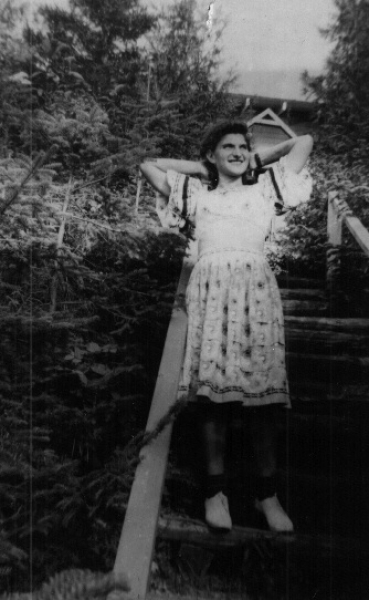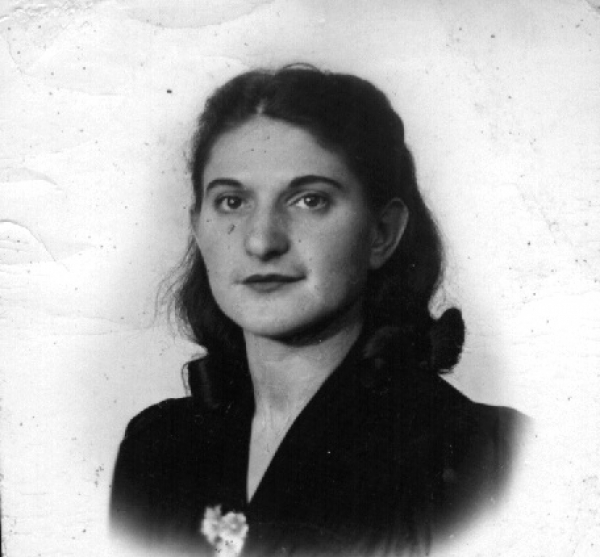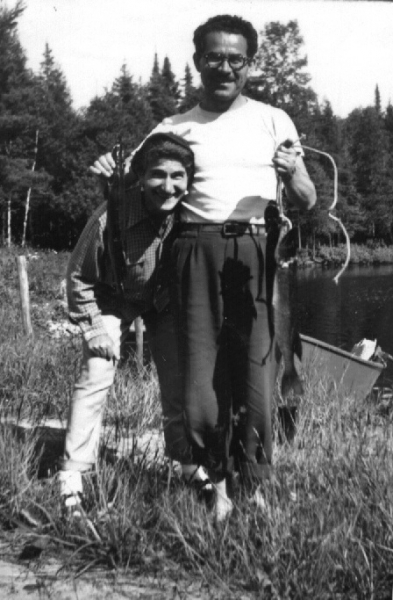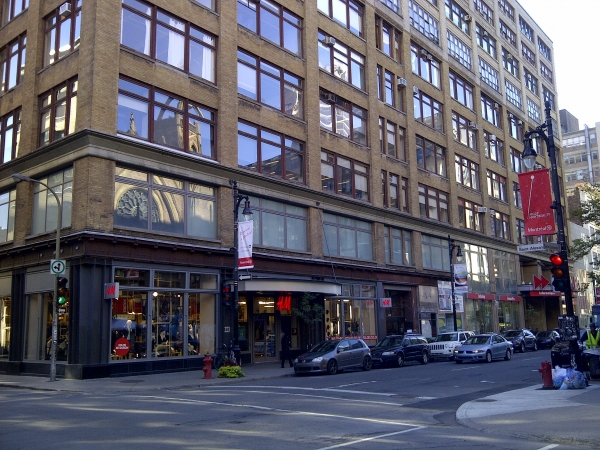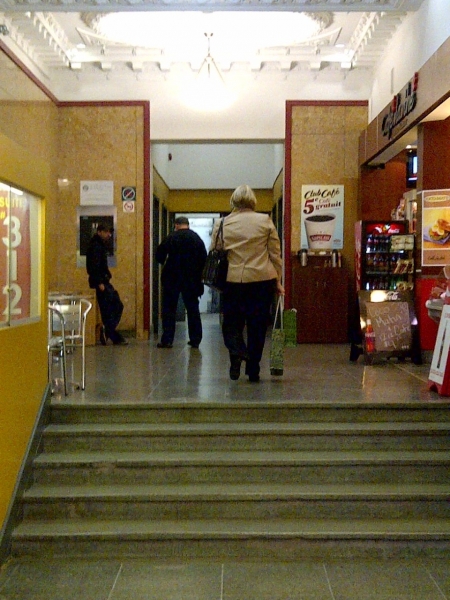Ena Ship - Jacobs Building
1934 - 1934
460 Ste-Catherine O.
In 1928 Ena Ship (née Tenhouse) left her small town in Ukraine to come to Canada, where she was paid three dollars a week – “a high wage” – to pull errant threads out of newly stitched pants. She moved onto ties, a non-unionized sector of the industry. During her time there, Ship helped her shop become part of a local in the Amalgamated Clothing Workers of America union. Ship later spent a number of years working for Camp Nitgedeiget (a children’s summer camp, whose title in Yiddish roughly translated to “Do not worry”) and as a financial secretary (having gone to night school while working in the garment industry). Through it all, she continued to do piecework from home. In 1942 she married Dave Ship, another garment worker and political agitator, after meeting him at a Communist Party club. After her children were born, Ship left “the trade”; she became the manager of the Vochenblatt and Outlook, Yiddish and English socialist newspapers. As of 1974 she had worked for the Vochenblatt position for 19 years.
These excerpts of her oral history appear in Seemah C. Berson’s I Have a Story to Tell You (WLU Press, 2010):
We used to help out when there were strikes in other trades. We would go and picket and sometimes get arrested. There was once a strike in the dress industry, in a building right next to us on St. Catherine Street, and we were asked to come and help. So they used to send the girls because the police would not do the things to girls that they would do to the men. And they were bringing in scabs. It was in a building where there was the elevators on a higher landing, with a couple of steps down in the front. There was a big foyer where they had a little restaurant there, and the police were watching the girls, the scabs, go in and we wouldn’t let them go into the elevator. Then a fight started. The police – we were so many – they wanted to get rid of some of us. So they pulled us to the door and threw us out. Pulled us to the door! Pushed us out! The two that were left inside was my sister and another girl, and they were arrested. (209)
My sister was a dressmaker – and this happened also in connection with this strike. One of them men went with two girls to the homes of scabs to speak to them that they shouldn’t go to work because it was to their benefit too that they should have a union. And my sister was stabbed with scissors in the back by one of the scabs. They had to burn it out so she shouldn’t get any infection! Things like that happened. Police were always there, breaking up the strikes, breaking up demonstrations. Even when we went to choir practice, plainclothes policemen would stand and watch, they would stand downstairs and watch who is going in and they would sit in at rehearsals. Can you imagine how we felt to have the Red Squad sit at rehearsals and watch us? (210)
Compiled by Sarah Woolf and Seemah C. Berson.
Links
Liens
A Balcony Under Threat in Balconville - Third Solitude SeriesI Have a Story to Tell You - Seemah Berson
Outlook: Canada's Progressive Jewish Magazine
Padlock Act - Canada's Human Rights History
Shedding Light on the Rag Trade - CBC Digital Archives
Vochenblatt (1953-1963) - University of Florida Digital Collection
Sources
Berson, Seemah C. (ed.) I Have a Story to Tell You. Waterloo: Wilfrid Laurier University Press, 2010.
*Images courtesy of Saul Ship and Shirlee Nickless, Bibliothèque et Archives nationales du Québec and Interactive Museum of Jewish Montreal.


This project is funded in part by the Government of Canada.
Ce projet est financé en partie par le gouvernement du Canada.
Ce projet est financé en partie par le gouvernement du Canada.
This project is funded in part by the Government of Canada.
© 2011-2015 Museum of Jewish Montreal, All Rights Reserved.
Site by Air Code Design inc. ![]()
© 2011-2015 Musée du Montréal Juïf, Tous droits réservés. Site par Air Code Design inc. ![]()
